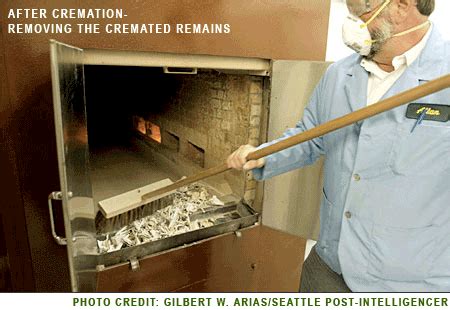Human Ashes Disposal: Making the Right Decision
Losing a loved one is an incredibly difficult experience, and the process of handling their remains can feel overwhelming. One of the first major decisions families face is how to dispose of the cremated ashes. This isn't simply a logistical matter; it's a deeply personal choice reflecting the deceased's wishes and the family's grief and remembrance. This comprehensive guide explores the various options for human ashes disposal, helping you navigate this sensitive process and make a decision that honors your loved one's memory.
What are my options for disposing of cremated ashes?
The options for disposing of cremated ashes are surprisingly diverse, allowing for personalized tributes that reflect the life and personality of the deceased. The most common choices include:
-
Burial: Ashes can be buried in a cemetery plot, either in an urn or directly in the ground. This provides a traditional and permanent resting place. Some cemeteries offer specialized niches or gardens for cremated remains.
-
Scattering: Scattering ashes in a meaningful location, such as a favorite place in nature, a cherished travel destination, or a location of personal significance, is a common and deeply personal choice. Check local regulations beforehand, as some areas have restrictions on scattering ashes.
-
Keeping the Ashes at Home: Many families choose to keep the ashes in an urn at home, allowing for a constant presence and a focal point for remembrance. This offers a sense of comfort and proximity to the loved one.
-
Keepsake Urns: Smaller urns, jewelry containing ashes, or other keepsake items allow for a more intimate and personal connection with the deceased. These can be passed down through generations, providing a lasting link to family history.
-
Memorial Reefs/Gardens: Some organizations create artificial reefs or memorial gardens using cremated ashes mixed with concrete. This offers an environmentally friendly option and creates a lasting tribute in a unique setting.
-
Water Burial (Scattering at Sea): Scattering ashes at sea provides a beautiful and serene send-off, particularly fitting for those who loved the ocean or spent significant time near the water. Regulations regarding water burials vary depending on location, so ensure you comply with all legal requirements.
What are the legal requirements for scattering ashes?
Legal requirements concerning the disposal of cremated ashes vary significantly depending on your location. Some jurisdictions have specific regulations regarding scattering ashes in public spaces, while others have stricter rules about scattering at sea. It’s crucial to:
- Research local and state regulations: Before scattering ashes, check with your local authorities or environmental agencies to ensure compliance. Some areas may prohibit scattering in certain locations, such as national parks or protected areas.
- Obtain necessary permits: In some cases, you might need to obtain permits for scattering ashes at sea or in specific locations.
- Consult with funeral home staff: Funeral homes often provide guidance on legal requirements and can assist with the necessary paperwork.
What if I don't know the deceased's wishes?
If the deceased didn't express specific wishes regarding the disposal of their ashes, the decision rests on the family. It's essential to engage in open and honest communication amongst family members to reach a consensus that feels respectful and appropriate. Consider:
- The deceased's personality and preferences: What were their favorite places? What activities did they enjoy? These can provide clues about a suitable location for scattering ashes or a style of memorial.
- Shared memories and stories: Discussing memories and stories can help family members connect and find common ground in deciding on a suitable method of disposal.
- Family traditions and cultural beliefs: Family traditions and cultural beliefs may influence the decision-making process, providing guidance on appropriate and respectful choices.
How much does disposing of cremated ashes cost?
The cost of disposing of cremated ashes varies widely depending on the chosen method and location. Factors influencing cost include:
- Burial plot costs: Cemetery plots can be expensive, depending on location and the type of plot chosen.
- Urn costs: Urns range from inexpensive to elaborate and costly pieces.
- Scattering permits: Some locations may require permits, which can incur fees.
- Transportation costs: Transportation to a scattering location or burial site may also add to the overall expense.
- Memorial services: The cost of a memorial service or other commemorative event will add to the overall expense.
How can I make the process meaningful?
The disposal of cremated ashes doesn't have to be solely a logistical event. It can be a profoundly meaningful and poignant occasion to honor your loved one's life and celebrate their memory. Consider incorporating elements such as:
- Personalized memorial services: Hold a memorial service or gathering to celebrate the life of the deceased and provide a space for family and friends to share memories.
- Symbolic gestures: Include symbolic gestures during the scattering or burial, such as releasing balloons or planting a tree.
- Personalization of the urn: Choose an urn that reflects the deceased's personality or interests.
- Creating a keepsake: Create a keepsake, such as a photo album or memory box, to preserve memories and cherished items.
Making the right decision regarding the disposal of cremated ashes is a deeply personal journey. By carefully considering the options, legal requirements, and personal preferences, you can create a fitting tribute that honors the life and memory of your loved one. Remember, there's no single "right" answer – the most important aspect is that the chosen method reflects your family's values and respects the deceased's memory.

